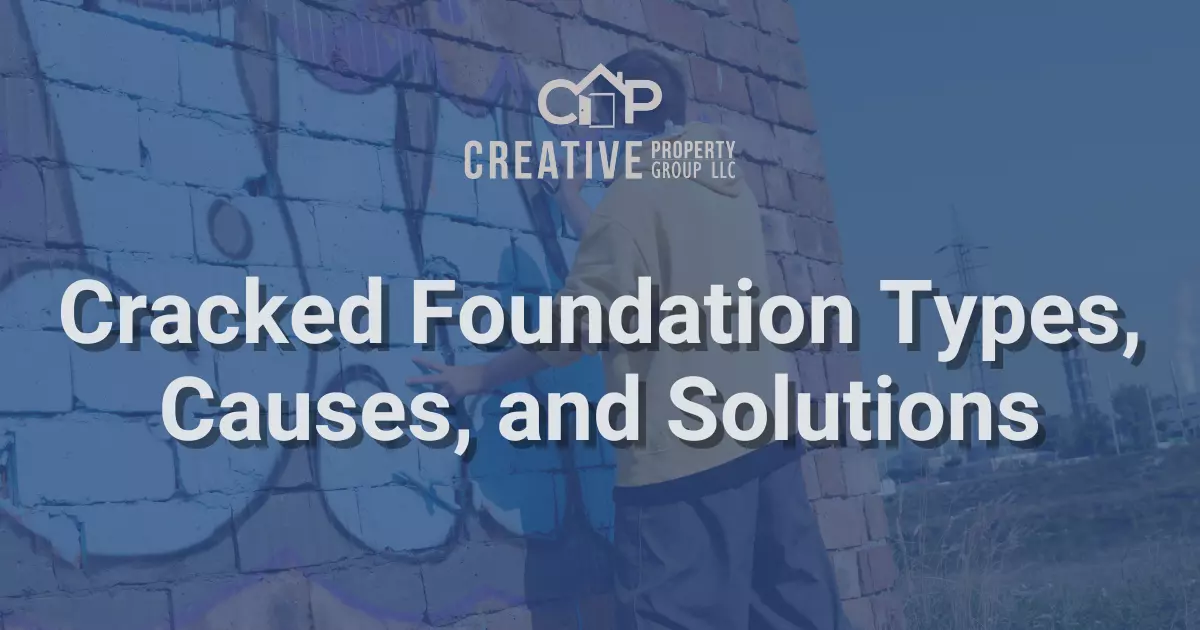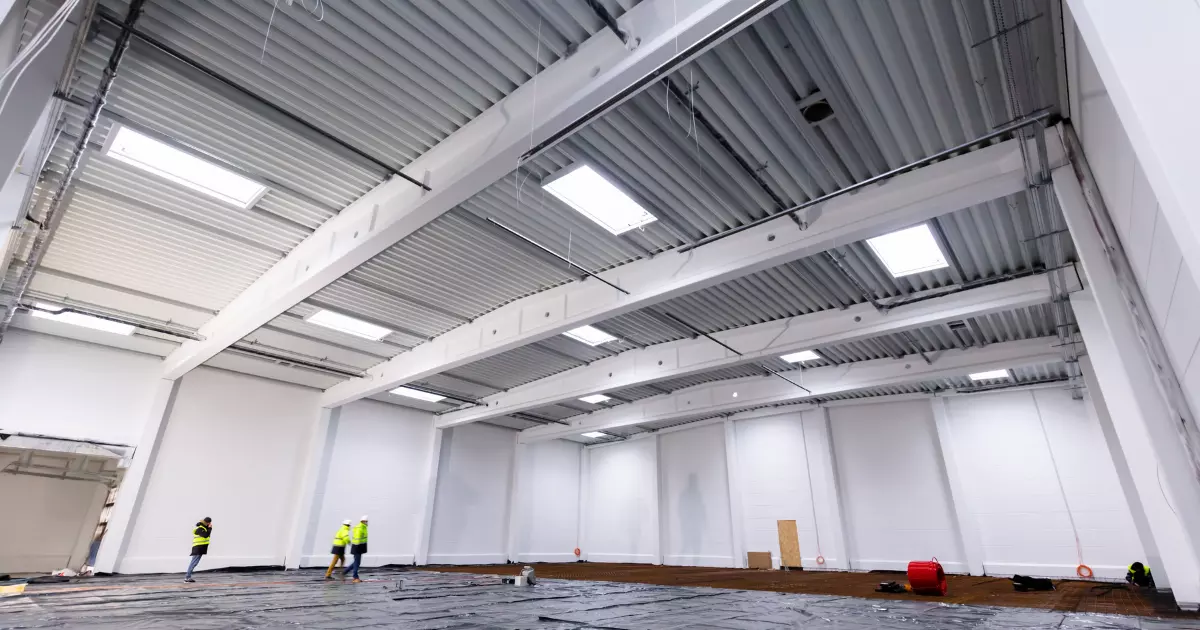Cracked Foundation Types, Causes, and Solutions

A cracked foundation is a homeowner’s nightmare that signals deeper structural damage lurking beneath the surface. Understanding the type and materials of your foundation is pivotal from crawl spaces to the more common slab-on-stem wall foundations. It’s not only about spotting a minor crack on your basement wall or observing uneven floors.
Comprehend the gravity of these signs and know when to seek professional attention. This guide goes deep into the intricacies of foundation walls, shedding light on different crack types, their root causes, and crucially, when to call in a foundation repair expert. Let’s unravel the mystery and offer peace of mind to property owners nationwide.
Types of Foundations and Their Materials

The foundation as a pivotal element of any structure, ensures stability and strength. Understanding the various foundation types and their constituent materials is crucial while many might overlook its importance. This section explores the diverse foundation categories, from crawl spaces to slab-on-grade. Learn insights into their unique characteristics and roles in ensuring a building’s longevity.
Exploring Crawl Spaces
Crawl spaces nestle between a property’s ground level and its main floor. They play a critical role in a home’s structural integrity. Understanding the specifics of crawl spaces becomes paramount when discussing cracked foundation causes. These spaces made of concrete blocks or brick foundations are prone to various types of foundation cracks.
They can lead to significant foundation movement if overlooked. Notice a subtle crack on your concrete floor or larger foundation issues. This means to always consult a foundation expert or professional contractor. They’ll guide you on how to maintain your home’s health from the ground up.
Slab-on-Stem Wall Foundations
Slab-on-stem wall foundations merge the durability of concrete foundation walls with the sturdiness of concrete slabs. They offer a solid base for any building structure. But a cracked foundation can still occur even with this robust design. Factors like soil movement during rainy seasons or irregularities in the concrete curing process can introduce flaws.
They can escalate and jeopardize the foundation’s integrity while some may dismiss minor cracks. , it’s crucial to consult a foundation professional if you spot any discrepancies. They can employ wall anchors to return walls to their original position. Ensure long-lasting results and peace of mind.
Exploring Basement Foundations
Basement foundations are constructed from concrete wall or block foundations. They serve as sturdy bases for many homes. But they aren’t immune to a cracked foundation. Unbalanced soil pressure, especially from expansive soils, can exert hydrostatic pressure against the foundation. This pressure, combined with soil creep and poor soil conditions, can lead to significant issues.
It’s essential to address it promptly if there’s a visible crack on a brick foundation wall or block. Hydraulic cement offers a solution for minor cracks. But it’s always wise to consult with a professional if you’re dealing with larger issues. Ensure your home remains safe and sound.
Understanding Slab-on-Grade Foundations
Slab-on-grade foundations are single and thick slabs made of concrete. They’re directly laid on the ground to eliminate the need for a basement or crawl space. These sturdy foundations can face a cracked foundation, especially when laid on expansive clay soil. Changes in soil moisture levels are due to water-saturated soil.
They can cause lateral pressure against the concrete slab foundation and lead to cracks. Building codes follow the pouring process. External factors like bouncy floors or incorrect ceiling height can indicate issues. It’s always crucial to monitor for changes and address any inconsistencies with individual blocks promptly.
Identifying Foundation Cracks
Spotting a cracked foundation early can save homeowners both time and money. Horizontal cracks, vertical fissures, diagonal disruptions, and stair-step fractures are the most common foundation cracks to watch out for. Each type of crack hints at a specific underlying issue.
Shrinkage cracks, for instance, can occur as concrete dries and shrinks. But structural foundation cracks demand immediate attention as they can signify severe issues. Cracks in block foundations are worrisome. It’s essential to understand the nature and origin of each crack. The right intervention can prevent further damage and costly repairs.
Varieties of Foundation Cracks

Distinguishing between different varieties of foundation cracks is crucial for effective remediation. Each type provides insights into underlying issues. That is from horizontal and vertical fissures to stair-step and shrinkage cracks. Understanding these variations helps homeowners take timely action. Ensure the safety and longevity of their property while preventing extensive damages.
Upright Foundation Fissures
Vertical cracks that you can also refer to as upright foundation fissures are a common sight in many homes. They can indicate a deeper structural issue within the foundation while some might consider them a mere cosmetic issue. These cracks can arise from heavy soil pressure or additional pressure changes around the foundation.
It’s essential to differentiate between mere foundation slab cracks and severe structural cracks that can lead to water damage. Consulting an experienced foundation repair contractor is imperative. They’ll assess the damage to foundations and provide insights into the best solutions. Don’t let a simple-looking crack become a massive and cracked foundation headache down the road.
Lateral Foundation Fractures
Lateral foundation fractures that you see as horizontal cracks are major red flags for homeowners. These types of foundation cracks indicate pressing issues like heavy soil pressure against your foundation walls. It’s crucial to pay attention to these warning signs if you’re spotting cracks in foundation walls like block foundation wall cracks.
Construction defects or water buildup can exacerbate the issue. Concrete slab cracks and cement block inconsistencies can signal foundation damage that wants attention. It’s not only about aesthetics; it’s a matter of your home’s structural integrity. Always consult a pro to assess the cracked foundation and advise accordingly if in doubt.
Factors Leading to Cracked Foundation
Understanding the factors leading to a cracked foundation can prevent costly repairs. Larger foundation cracks and wider ones stem from poor construction or unstable soil. If you’re noticing ceiling gaps or other warning signs, it’s essential to address them early. Don’t let your home’s integrity wane.
Solutions for Mending Foundation Cracks
Addressing a cracked foundation promptly ensures your home’s safety. Resolve common basement foundation wall issues using various foundation crack repair methods. Choosing the right repair material is crucial from concrete cures to anchor foundation repair. Consult a trusted foundation contractor for tailored solutions. Stay proactive and protect your home.
Conclusion
In wrapping up, recognizing the signs of foundation problems early can make a world of difference. From concrete shrinkage to various types of foundation cracks, understanding these issues is the first step to a long-lasting solution. It’s imperative not to delay professional repair. A timely response can save you from greater expenses down the road.

Reach out for an expert opinion if you’re unsure about your home’s structural integrity or the materials used in your basement foundation wall. Let’s protect your investment together. Request a quote for foundation repair from Creative Property Group today. Your home’s safety is worth it.

